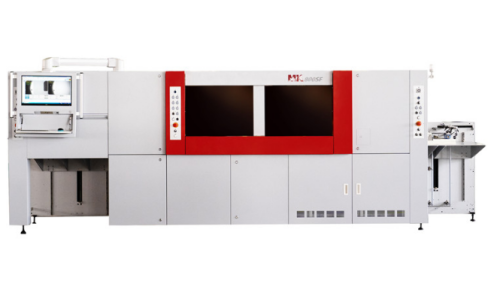Post-press is a critical part of any printing process, as it is responsible for transforming the printed materials into the final product. This process plays a crucial role in determining the look, feel, and functionality of the printed materials. Without post-press, even the most beautiful and well-designed print job would be incomplete, as it would lack the necessary finishing touches that bring it to life. By investing in high-quality post-press services, businesses can ensure that their printed materials not only look great but also meet the functional requirements of their intended use, whether it's a brochure, a book, or a product package.
Post press consists of several sub processes that are implemented depending upon the type of the project and the job being handled.
1. Cutting: Die cutter is commonly used machines in post-press operations. It is used for cutting large substrates into different sheets or pages. This machines come in various sizes, features, abilities, capacities, and configurations to suit specific cutting needs.
2. Folding: This post-press operation is typically used for pamphlets, magazines, and product boxes. Print shops use bone, knife, and buckle folders to achieve different types of folds.
3. Assembling: Assembling is a three-step process that involves gathering, collating, and inserting. This operation is critical for ensuring that the printed materials are in the correct order and format.
4. Biding: Binding is the process of sticking the printed pages together.
Cutting is a crucial step in the production of printed graphics, as it enables the materials to be cut into their final shape. The choice of cutting method depends on various factors, including the material type, thickness, shape, and quantity.
Here are some types of die cutting processes:
l Digital die cutting involves a computer-controlled CAD table that drags a small blade around the graphic to cut the shape, making it suitable for short-run jobs.
l Steel rule die cutting uses a large, long blade bent to the desired finished shape and is pressed into the material all at once, making it faster but requiring a custom-made die for each job, making it better suited for long-running jobs.
l Laser cutting: It uses a high-powered laser to cut elaborate shapes not achievable with a die cutter. While lasers can cut thin materials quickly, they are generally slower on throughput when cutting thick materials.
l Shear cutting, also known as guillotine or square cutting, uses a straight, long blade to cut numerous sheets at once. This method only cuts in straight lines, making it limited to rectangle shapes.
Laser cutting is a highly precise cutting method that offers several advantages over other cutting methods. One of the most significant advantages of laser cutting is its ability to cut complex shapes with a high degree of accuracy. This is because the laser beam is guided by computer software, enabling it to cut intricate designs with a high level of precision. Additionally, laser cutting produces a very clean cut that requires minimal post-processing, reducing the time and cost associated with finishing.

MK800SF is a laser cutting machine for format of 600x890mm, typically for users of sheet-fed self-adhesive make-up, carton manufacturing plants and digital printing plants. It fits for cutting of non-standard cardboard and for small batch digital printing on paper or box.
MK-a professional printing equipment manufacturer and comprehensive service provider. We can provide the digital die cutting solution for short plate and short run. If you want to know more information about the laser die cutting machine, welcome to contact us, please visit our website at https://www.masterworkgroup.com/ We will be happy to help you out!
We look forward to hearing from you. In order to respond to your message more quickly, we need some information. *These are required